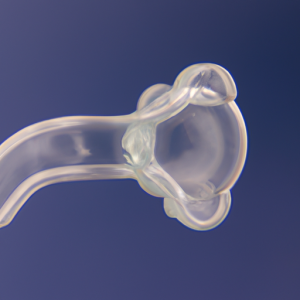Orthodontics, a branch of dentistry that focuses on the diagnosis, treatment, and prevention of dental and facial irregularities, plays a crucial role in enhancing both the functionality and appearance of a person’s smile. From misaligned teeth to jaw discrepancies, orthodontic issues can significantly impact an individual’s oral health and self-confidence. In this comprehensive guide, we will delve into the world of orthodontics, exploring its diagnosis, treatment options, symptoms, causes, and more. Whether you have been considering orthodontic treatment for yourself or simply wish to expand your knowledge on the subject, this article will provide you with valuable insights to navigate through the complexities of orthodontics. So, let’s embark on this enlightening journey, unraveling the mysteries behind orthodontics, and discovering the key factors that contribute to orthodontic issues.
1. “Understanding Orthodontics: A Comprehensive Guide to Diagnosis, Treatment, and Symptoms”
Orthodontics is a branch of dentistry that focuses on the diagnosis, treatment, and prevention of dental and facial irregularities. It involves the use of orthodontic appliances, such as braces, to correct misaligned teeth and jaws. This comprehensive guide aims to shed light on the various aspects of orthodontics, including its diagnosis, treatment procedures, and common symptoms.
Diagnosis is the first step in orthodontic treatment. It involves a thorough examination of the patient’s teeth, jaws, and facial structure. Orthodontists use various diagnostic tools, such as X-rays, photographs, and dental impressions, to assess the severity of the dental problem and develop an appropriate treatment plan. They consider factors like tooth alignment, bite irregularities, and facial aesthetics to determine the best course of action.
Once a diagnosis has been made, orthodontic treatment can commence. The primary goal of treatment is to correct dental and facial irregularities, enhance oral function, and improve the overall appearance of the patient’s smile. The most common orthodontic treatment is braces, which consist of brackets, wires, and bands that apply gentle pressure to move the teeth into their desired positions. In recent years, clear aligners have also gained popularity as an alternative to traditional braces. These custom-made, removable aligners gradually shift the teeth without the need for brackets or wires.
Symptoms of orthodontic issues can vary depending on the severity and type of dental irregularity. Common symptoms include crowded or crooked teeth, gaps between teeth, overbite (upper teeth protruding over the lower teeth), underbite (lower teeth protruding over the upper teeth), crossbite (upper and lower teeth misaligned), and open bite (upper and lower front teeth unable to touch when the mouth is closed). Additionally, patients may experience jaw pain, difficulty in chewing or speaking, and
2. “Unveiling the Causes of Orthodontic Issues: Exploring Genetic Factors, Habits, and Dental Conditions”
Orthodontic issues, such as misaligned teeth, overbites, underbites, and overcrowding, can greatly impact an individual’s oral health and overall well-being. While many factors contribute to the development of these problems, understanding their causes is crucial for effective diagnosis and treatment.
Genetic factors play a significant role in orthodontic issues. Research suggests that certain dental conditions, including malocclusions, are hereditary. If a family member has experienced orthodontic problems, such as crooked teeth or a misaligned jaw, there is a higher likelihood of these issues being passed down to future generations. Genetic factors can influence the size and shape of the jaw, the position of the teeth, and the overall development of the oral cavity.
However, it is important to note that genetic predisposition alone is not solely responsible for orthodontic issues. Habits and environmental factors also contribute to their development. For instance, thumb sucking, prolonged pacifier use, or tongue thrusting can lead to malocclusions. These habits put pressure on the teeth and jaw, causing them to shift or misalign over time. Additionally, certain oral habits, such as mouth breathing, can affect the growth and development of the teeth and jaw, leading to orthodontic problems.
Dental conditions, such as tooth decay, gum disease, or missing teeth, can also contribute to orthodontic issues. Decay or loss of teeth can result in the shifting of surrounding teeth, leading to misalignments. Similarly, gum disease can weaken the supporting structures of the teeth, causing them to become loose and shift positions. Addressing these underlying dental conditions is essential before undergoing orthodontic treatment to ensure long-term success.
It is worth mentioning that orthodontic issues can also be caused by trauma or injury to the face or jaw. Accidents or sports-related injuries
3. “Orthodontics: From Braces to Invisalign – Evaluating Different Treatment Options and Their Effectiveness”
Orthodontics is a specialized branch of dentistry that focuses on diagnosing, preventing, and treating dental and facial irregularities. One of the primary objectives of orthodontics is to correct malocclusions, commonly known as dental misalignments or crooked teeth. These misalignments can lead to various issues such as difficulty in chewing, speech impairments, and even self-esteem problems.
Traditionally, braces have been the go-to treatment option for orthodontic problems. Braces consist of metal or ceramic brackets that are bonded to the teeth and connected by wires and rubber bands. This method applies gentle pressure to gradually shift the teeth into their proper positions over time. Despite being effective, braces are often associated with discomfort, difficulty in oral hygiene maintenance, and a noticeable appearance, making some individuals hesitant to undergo treatment.
However, with advancements in orthodontic technology, alternatives to traditional braces have emerged. One such option is Invisalign, a revolutionary treatment that offers a more discreet and comfortable approach to teeth straightening. Invisalign treatment involves the use of a series of clear, removable aligners custom-made for each patient. These aligners are practically invisible and can be easily taken out when eating or performing oral hygiene routines.
When evaluating different treatment options, it is important to consider the effectiveness of each method. Both braces and Invisalign have proven to be highly successful in treating a wide range of orthodontic issues. However, the effectiveness of each option may vary depending on the severity of the case and the patient’s compliance with the treatment plan.
Braces are particularly effective in correcting complex malocclusions and cases that require significant teeth movement. The brackets and wires allow for precise control over tooth positioning, making them suitable for more severe conditions. Additionally, braces are typically recommended for patients with certain dental conditions, such as teeth crowding or

